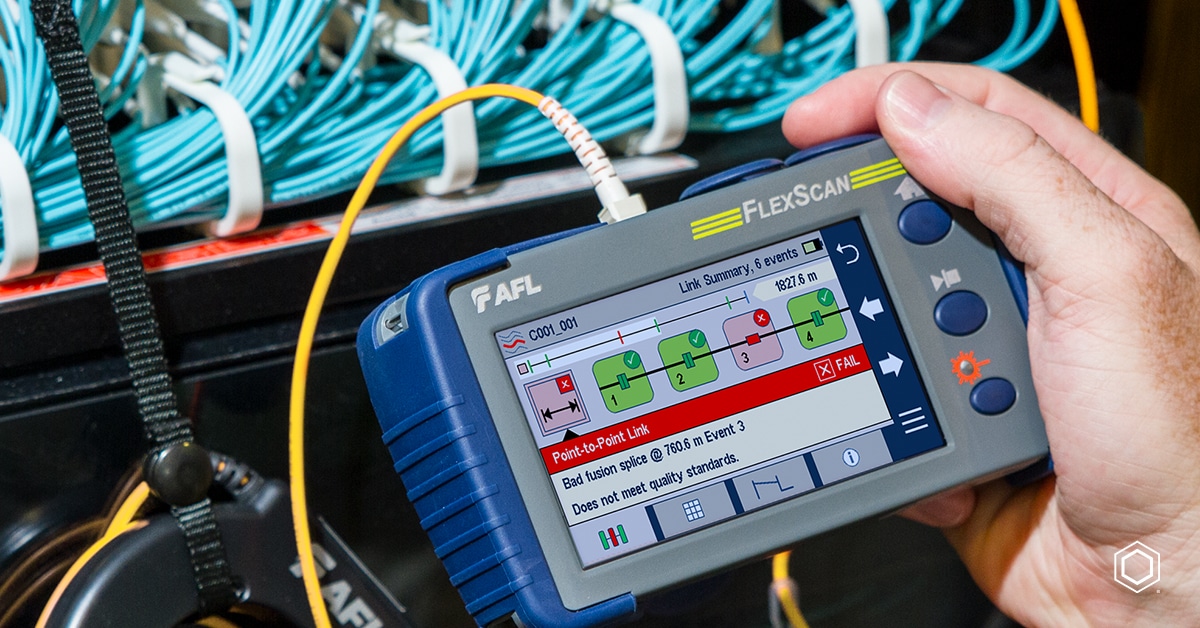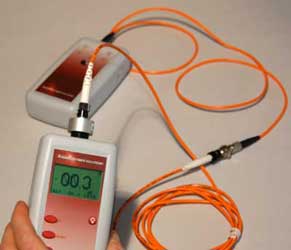Introducing the Secret Uses of Optical Fiber Evaluating for Effective Data Transmission
In the realm of modern-day communication, optical fibre screening becomes a vital practice for enhancing data transmission. By utilizing approaches such as Optical Time Domain Name Reflectometry (OTDR) and insertion loss evaluations, network operators can successfully determine and resolve concerns that might jeopardize signal honesty. As the need for faster and more dependable connections proceeds to rise, the effects of these screening strategies prolong past instant fault detection, influencing long-term network performance. Recognizing the multifaceted applications of optical fiber screening welcomes a much deeper expedition into its essential function in shaping the future of data interaction.

Relevance of Optical Fiber Screening
The importance of optical fibre testing can not be overstated, as it functions as a crucial component in making sure the reliability and effectiveness of data transmission systems. In an age where high-speed interaction is extremely important, any type of shortages in fibre optics can bring about significant data loss and minimized performance. Rigorous testing methods are necessary to confirm the integrity and performance of optical cords.
Evaluating enables the recognition of defects such as micro-bends, macrobends, and splice losses that might prevent signal high quality. Additionally, it provides insights right into the general attenuation and bandwidth abilities of the fibre, ensuring that the network fulfills details functional criteria. Normal screening not just improves system performance yet also lengthens the life-span of the framework by recognizing possible problems before they escalate into costly failings.

Kinds Of Optical Fiber Tests
Various sorts of optical fiber tests are carried out to ensure the performance and integrity of fibre optic networks. These examinations can be classified into numerous essential kinds, each offering a certain purpose in analyzing the stability of the fiber.
First, Optical Time Domain Name Reflectometry (OTDR) is a prominent examination that determines faults, mates, and connectors within the fiber. By sending pulses of light and assessing the shown signals, technicians can determine problems along the fiber's size.
Second, insertion loss examinations examine the quantity of signal loss when light go through connectors or splices, which is vital for keeping network efficiency.
Third, return loss tests gauge the quantity of light reflected back in the direction of the source, offering understandings right into the quality of links and potential resources of disturbance.
In addition, continuity examinations ensure that the fibre path is full, allowing service technicians to validate that the fibre is undamaged without any breaks. optical fibre testing equipment.
Last but not least, visual mistake locators make use of visible light to recognize breaks or severe bends in the fibre, helping in fast troubleshooting. Collectively, these examinations develop a thorough approach to maintaining optimum performance in fiber optic networks.

Applications in Network Upkeep
In modern-day telecoms, efficient network upkeep counts greatly on blog here optical fibre testing to identify and rectify issues quickly. Routine testing guarantees that the network operates at optimal performance levels, minimizing downtime and boosting customer experience.
One of the primary applications of optical fibre screening in upkeep is the discovery of faults, such as breaks, bends, or inappropriate connections. Techniques like Optical Time Domain Name Reflectometry (OTDR) allow specialists to locate these issues properly and examine the high quality of the fiber link. Additionally, loss screening confirms the integrity of the optical course, making certain that signal depletion remains within appropriate limitations.
Regular maintenance testing additionally assists in safety nets, identifying possible problems prior to they escalate right into considerable failings. This positive method can save companies both time and funds. During upgrades or expansions, optical fiber testing ensures that brand-new setups integrate effortlessly with existing framework.
Enhancing Data Transmission Dependability
Reliable network upkeep through optical fibre screening not just addresses immediate problems yet additionally plays a significant function in boosting information transmission reliability. By determining mistakes, measuring signal loss, and examining the total condition of fibre optic cable televisions, screening makes certain that potential issues are remedied prior to they rise into considerable disturbances.
Regular optical fibre screening, such as time-domain reflectometry (TDR) and optical time-domain try here reflectometry (OTDR), allows service technicians to pinpoint the precise areas of breaks, bends, or port concerns within the network. This proactive strategy not just lessens downtime yet additionally maximizes the efficiency of information transmission by ensuring that the pathways for signals are clear and working effectively.
Additionally, screening aids in verifying adherence to market requirements and specs, which is critical for keeping the honesty of information circulation. By making sure that each connection meets required limits for loss and quality, companies can strengthen their self-confidence in the dependability of their data networks.
Ultimately, buying extensive optical fibre testing not just boosts information transmission integrity yet additionally sustains the long-lasting operational efficiency of interaction frameworks.
Future Patterns in Fibre Testing
Arising innovations are poised to change fiber testing, paving the means for improved efficiency and precision in data transmission diagnostics (fibre testing equipment). As the demand for faster net and higher bandwidth remains to climb, the integration of innovative tools such as artificial knowledge (AI) and device understanding (ML) is readied to transform typical fibre screening techniques. These technologies will certainly enable anticipating upkeep and automated fault discovery, substantially reducing downtime and improving network reliability
In addition, the adoption of Net of Things (IoT) tools will certainly help with real-time surveillance of fiber networks, permitting prompt recognition of performance issues. This change in the direction of proactive monitoring will reduce disruptions and optimize information flow.
Additionally, technologies in optical time-domain reflectometry (OTDR) and brand-new testing standards will certainly enhance the precision of dimensions, making sure that information stability is preserved throughout the transmission procedure. The development of 5G modern technology also demands the advancement of extra innovative fibre testing techniques to support its high-speed needs.
Conclusion
In conclusion, website link optical fibre testing is vital for maintaining efficient data transmission within interaction networks. By using different testing methods, such as OTDR and insertion loss tests, prospective faults can be identified and remedied, thus enhancing signal quality and reducing downtime. Regular testing not only makes sure compliance with market standards however also promotes aggressive maintenance, inevitably adding to the long-lasting integrity and efficiency of fibre optic systems. The continued evolution of testing techniques will certainly additionally boost these abilities in the future.